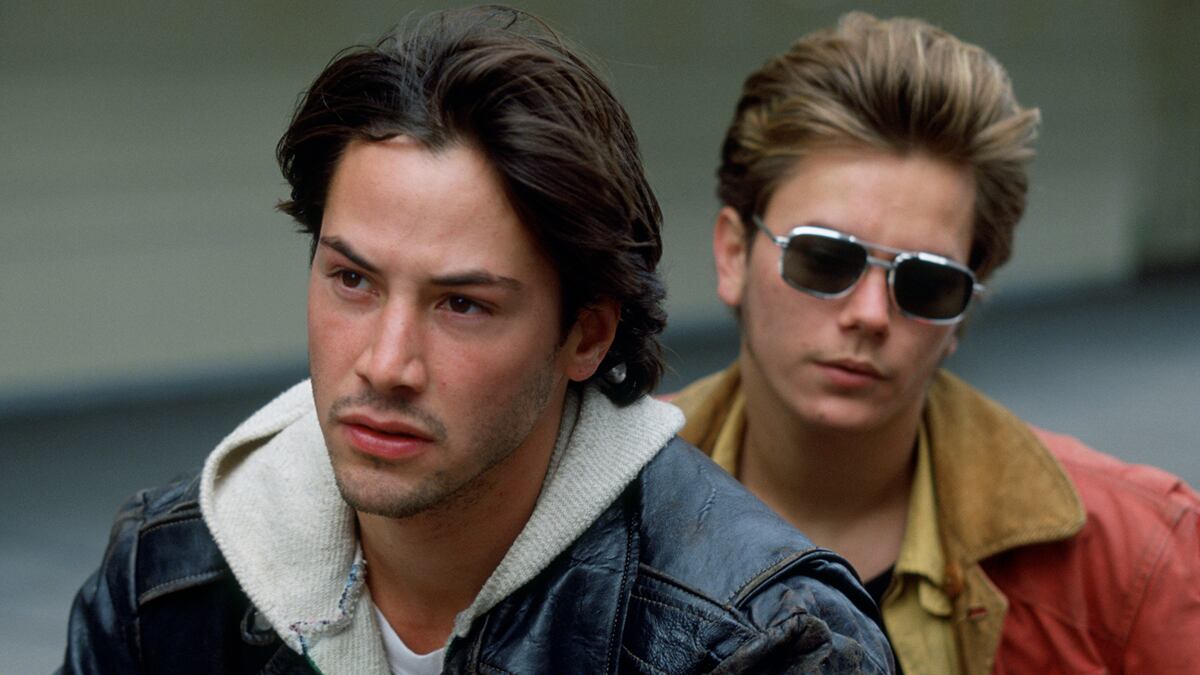At first glance, the subtitle of Katya Tylevich’s new Gus Van Sant biography—The Art of Making Movies—might suggest a lesson in technique from the director of My Own Private Idaho (1991).
But sink into Tylevich’s expansive interviews with the legendary Portland filmmaker and that craft-oriented suggestion takes on an almost comic energy. Examining Van Sant’s career in these pages won’t teach readers how to frame a shot, redefine a city’s cinematic reputation or balance art and commerce.
Rather, the book (Laurence King Publishing, 288 pages, $25) profiles Van Sant’s artistic mentality—one that shifts with the wind across a 40-year career marked by subversion, acclaim, influence, failure and obscurity. And even after reading, fans could reasonably debate which films fall into which of those phases.
“That’s the irony of writing a ‘how-to’ book about Gus Van Sant’s process: There’s no way to replicate his last-minute decisions, his personality, experiments and unexpected or even absurd outcomes,” says Tylevich, a Los Angeles arts and fiction writer who’s collaborated on projects with Marina Abramovic.
Tylevich first met Van Sant on assignment for the arts journal Elephant in 2014. The interviews that fuel the biography unfolded over several years at Van Sant’s Hollywood Hills home, typically “surrounded by his paintings in progress,” says Tylevich.
While the book skims shifting interpretations of Van Sant’s oeuvre, its career survey will satisfy the curiosity of most cinephiles. There are delectable insider tales about everything from how River Phoenix’s improvisation changed the course of Idaho to the hazards of shooting the unscripted Gerry (2002), which starred Matt Damon and Casey Affleck, in Death Valley.
Tylevich’s book delves into Van Sant’s challenging “Death Trilogy,” which includes Gerry, Elephant (2003) and Last Days (2005). Despite being overlooked by moviegoers approaching his work from a Portlandian perspective, Tylevich believes that this stretch of extemporaneous narratives is crucial to understanding the lengths of Van Sant’s Hollywood subversion.
While writing, Tylevich says she grew notably fonder of Last Days, a portrait of a doomed, languishing Kurt Cobain analog (Michael Pitt). “The emphasis on boredom in a calamity belonging to the collective psyche—wow, that’s a bold move!” Tylevich says. “I wanted the book to communicate some of the dark humor of Gus’ films.”
Tylevich also highlights the comedy of Van Sant films like Drugstore Cowboy (1989) and To Die For (1995), as well as the cosmic hilarity of his difficult studio dealings. His determination to strike the pose of an uncompromising artist may have led to triumphs like Elephant, which won the Palme d’Or at the 2003 Cannes Film Festival, but it also led to his much-mocked 1998 Psycho remake, which still baffles devotees of Alfred Hitchcock’s 1960 original.
As in Van Sant’s films, Portland is a notable presence in Tylevich’s book, especially in the chapter about Mala Noche (1985), a film about a convenience store clerk (Tim Streeter) who falls in love with Mexican migrant worker (Doug Cooeyate). For Van Sant, the city became not just a setting, but a crucial component of conceiving a new way to make movies.
“I loved Gus’ recollections of the former clergy mansion in Northwest Portland, full of film fanatics and professionals,” Tylevich says. “That was a strong reference for me; it gave physical parameters to a completely unique artistic atmosphere.”
The modestly sized coffee table book also showcases rare and exclusive photos, including Van Sant’s Polaroids, images of his paintings, and art collages by cinematographers Eric Alan Edwards and Christopher Doyle. The shots of Van Sant working often appear disarmingly ordinary, showing him simply pausing or conversing with an actor amid a process that would ultimately give rise to influential art.
Like so many GVS films, Gus Van Sant: The Art of Making Movies offers an intimate experience, but not a delivery system for meaning. Anyone who treats it as a how-to guide would be just as likely to design a transgressive, open-world VR game on the moon as they would to film a sequel to My Own Private Idaho.
“I love that Gus’ work is difficult to define,” Tylevich says. “Ambiguity, metaphor, poetry…those are the qualities that, when done right, reach audiences for reasons that transcend rational explanation.”

